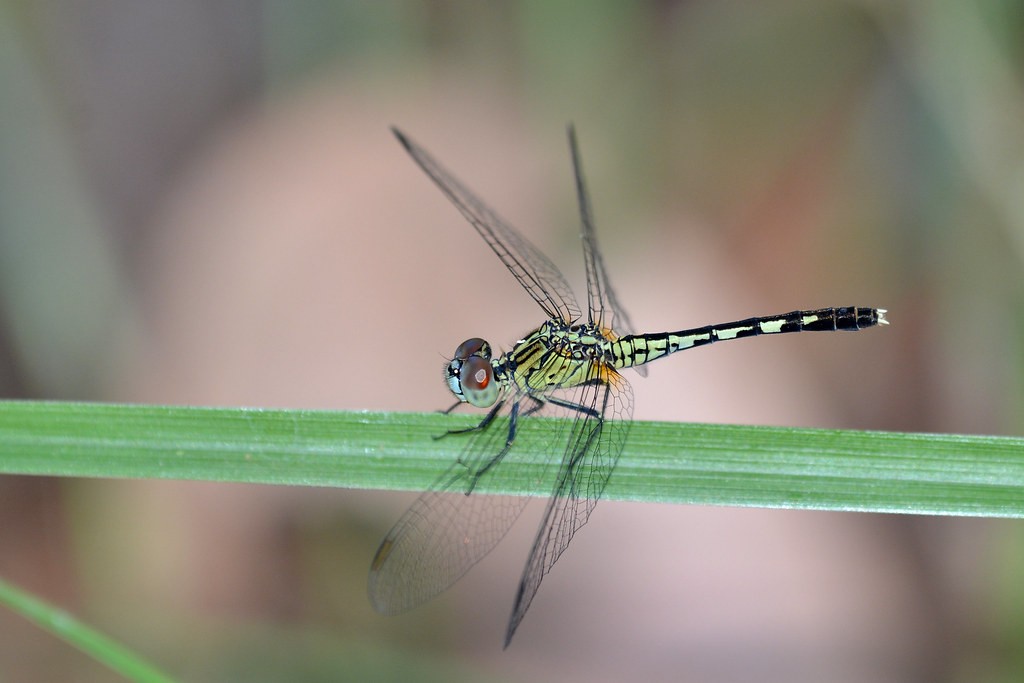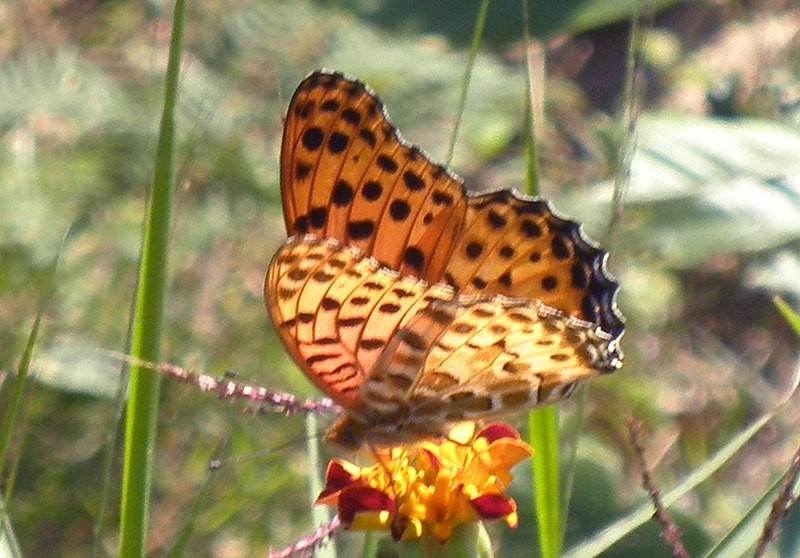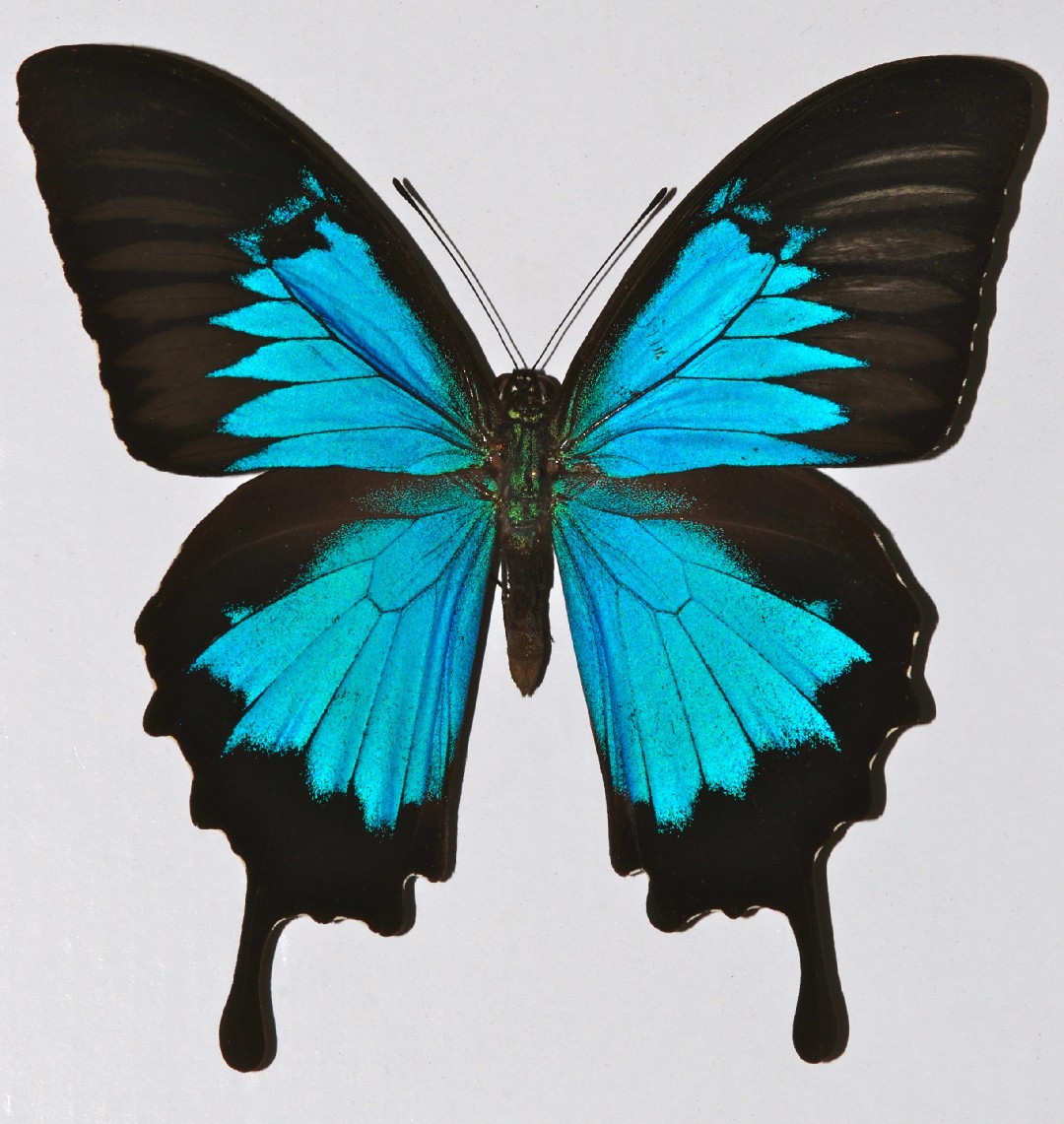Top 17 Most Common Insects in Papua New Guinea
Insects are fascinating creatures that adapt to their environments. The diverse landscapes of Papua New Guinea create a rich tapestry of insect life. Distinctive geographic features and climates shape the variety of insects, from pests to beneficial species. This list explores the top 17 most common insects in Papua New Guinea, showcasing how they reflect and affect the biodiversity of this unique region.
Most Common Insects

1. Weaver ant
The weaver ant can be found in silk-woven nests in the foliage of Southeast Asia and Oceania. These ants have a painful bite and prey on other small insects. Larvae have many uses for local regions, including being a popular fishing bait and a good choice of bird food.

2. Common birdwing
Male: The upperside forewings are velvety black. There is a green (most races) subcostal stripe and a green (most subspecies) marginal stripe bordering the termen, tormen and dorsum of the wing. The sex brand is black and longish. The underside of the forewing is black. There is a chain of bluish or green postdiscal spots. The hindwings are green. At the wing's leading edge (costa) there are basal yellow-gold spots. There is also a postdiscal chain of black spots. The edge of the hindwing is black. The underside is dark green or bluish. The yellow-golden spots are transparent. The veins are partly black and the marginal edge of the wing is black. At the outer edge there is a postdiscal chain of black spots. The body (abdomen) is yellow. Head and thorax are black. The underside of thorax has a red hair coat. Female: The female is larger than the male and in the upper range of the wingspan. The basic colour of the female is dark brown. There is a chain of white postdiscal spots on the forewings. There is a chain of larger white postdiscal spots with dark centres on the hindwing. The underside is very similar to the upper. Larva: First instar larvae are wine red on hatching. They soon turn black or dark brown. All segments have soft tubercles with stiff ends bearing black spines. On the 4th segment tubercles are red. The tubercles are dark brown on the other segments. In the second instar, the tubercles lack spines, the 4th tubercles are light red and on the other segments they are the same colour as the body. In the third instar, there is a white to pink saddlemark on the 4th segment. In the fourth and fifth instars, the ground colour is ashy grey to brown, the saddlemark on the 4th segment is white and the tubercles on the 4th segment are white. There may be saddlemarks on the 5th segment and the 6th segment. The tips of the tubercle are black and the osmeterium is dark red. 
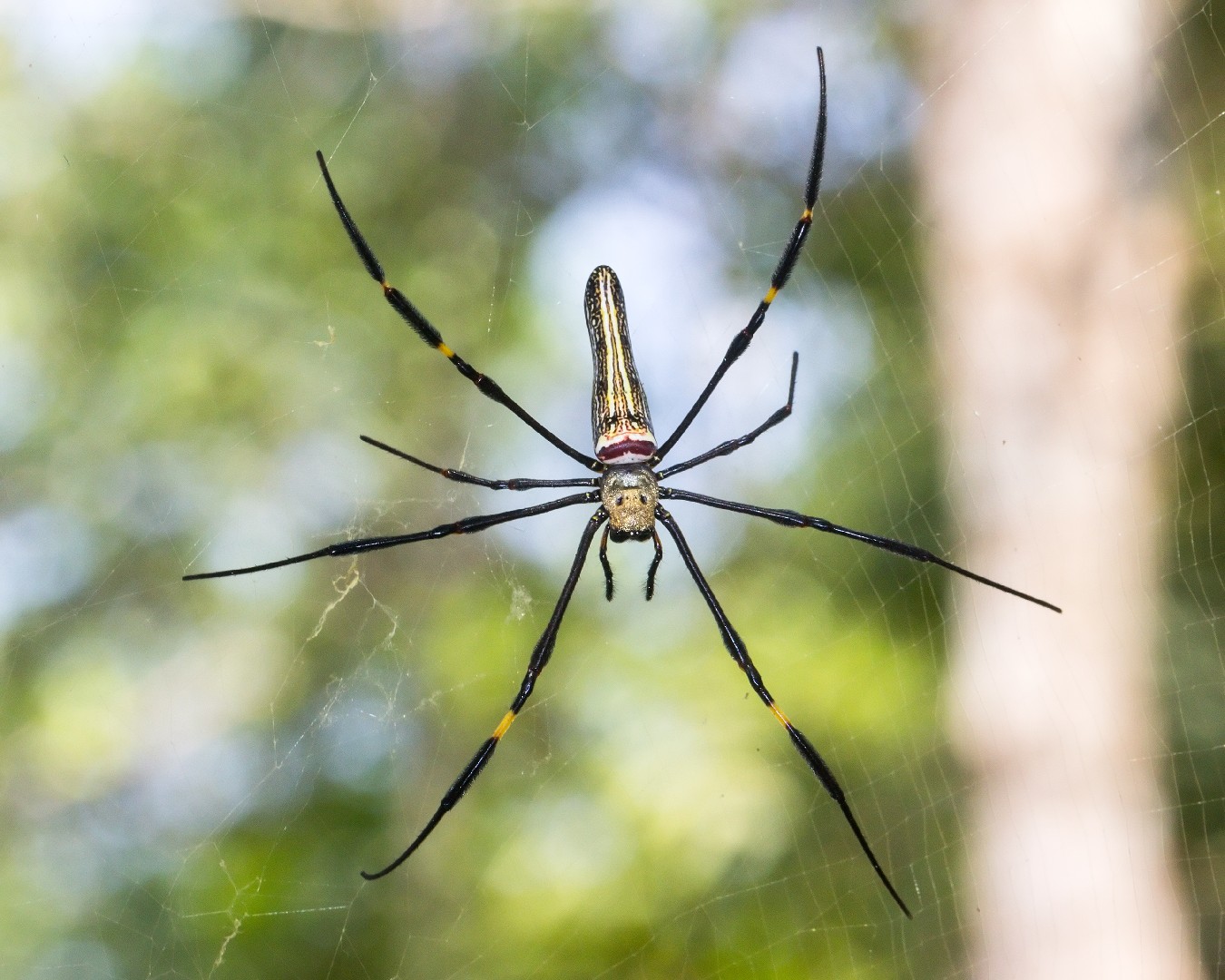
3. Giant golden orb weaver
The giant golden orb weaver (Nephila pilipes) is known for spinning a golden web. Despite that being neat, that isn't the weirdest part about them. Females are known to favor gigantism, causing males to be much smaller than average females. Males are known to have mating plugs which attempt to prevent other males from mating, but the size difference can make this tricky.
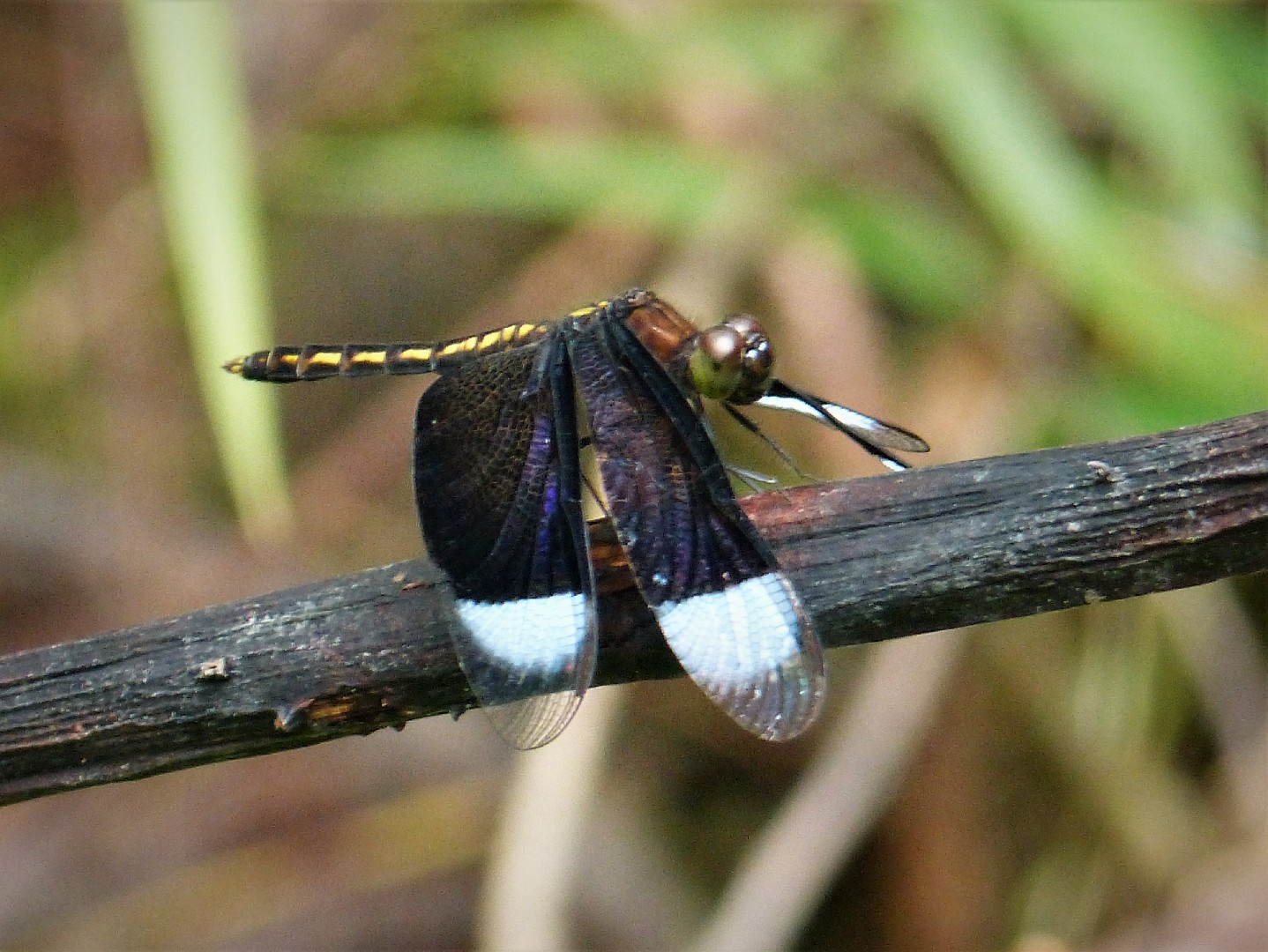
4. Neurothemis decora
Neurothemis decora is a species of dragonfly in the family Libellulidae. 
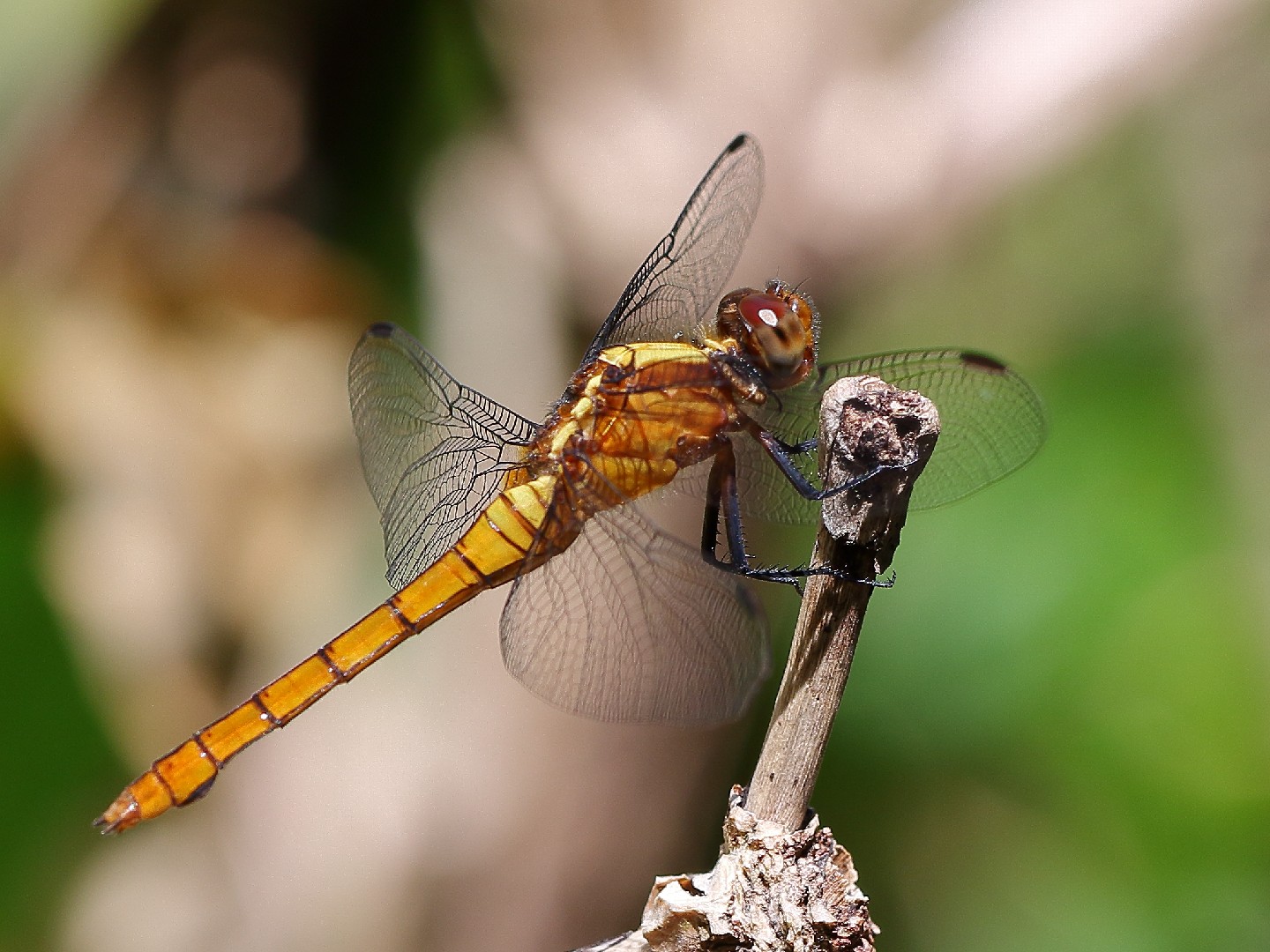
5. Fiery skimmer
Orthetrum villosovittatum is a medium-sized dragonfly with a wingspan of 6 - 9 cm. Mature males have dark greyish to greenish-brown thoraxes and red abdomens, with the abdomen constricted at segment four. Young males have an amber and black colouring. Females are ochre-coloured. 
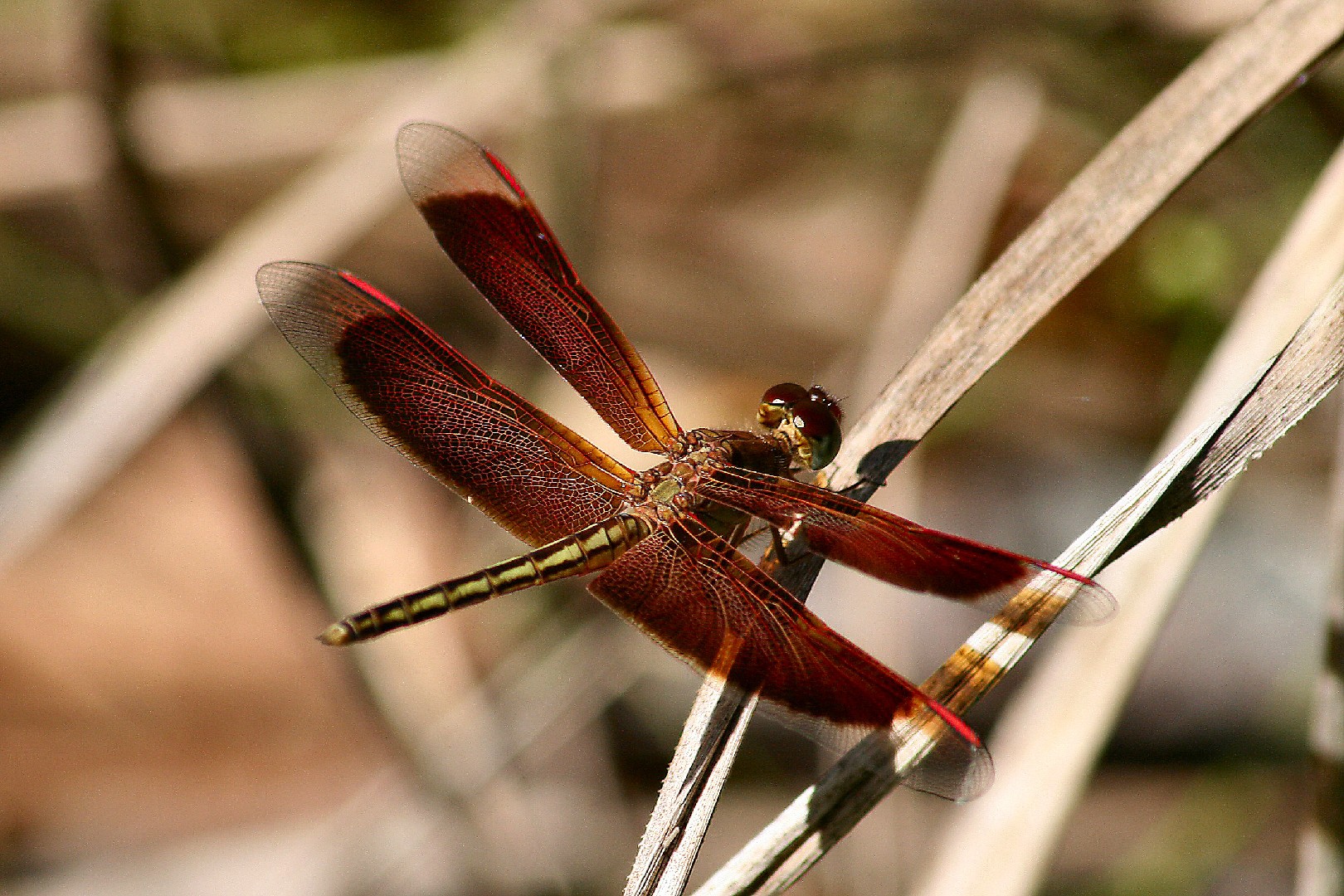
6. Painted grasshawk
Neurothemis stigmatizans, known as the painted grasshawk, is an Australian species of dragonfly in the family Libellulidae. The genus Neurothemis is distributed from India to the western Pacific. This species is found in northern Australia in an arc from the southern Queensland border to Broome, Western Australia. Neurothemis stigmatizans is a medium sized dragonfly (wingspan 60-85mm) which inhabits still waters in the vicinity of grassy areas. The male abdomen is reddish-brown with a lighter dorsal stripe, his wings have deep reddish-brown markings that extend past the nodus, with paler contrasting veins. The female is pale greenish-yellow with a dark dorsal stripe and side stripe; her wings are mostly hyaline with a dark smudge beyond the nodus and dark wingtips. The pterostigma of both sexes is pink or pale coloured. 
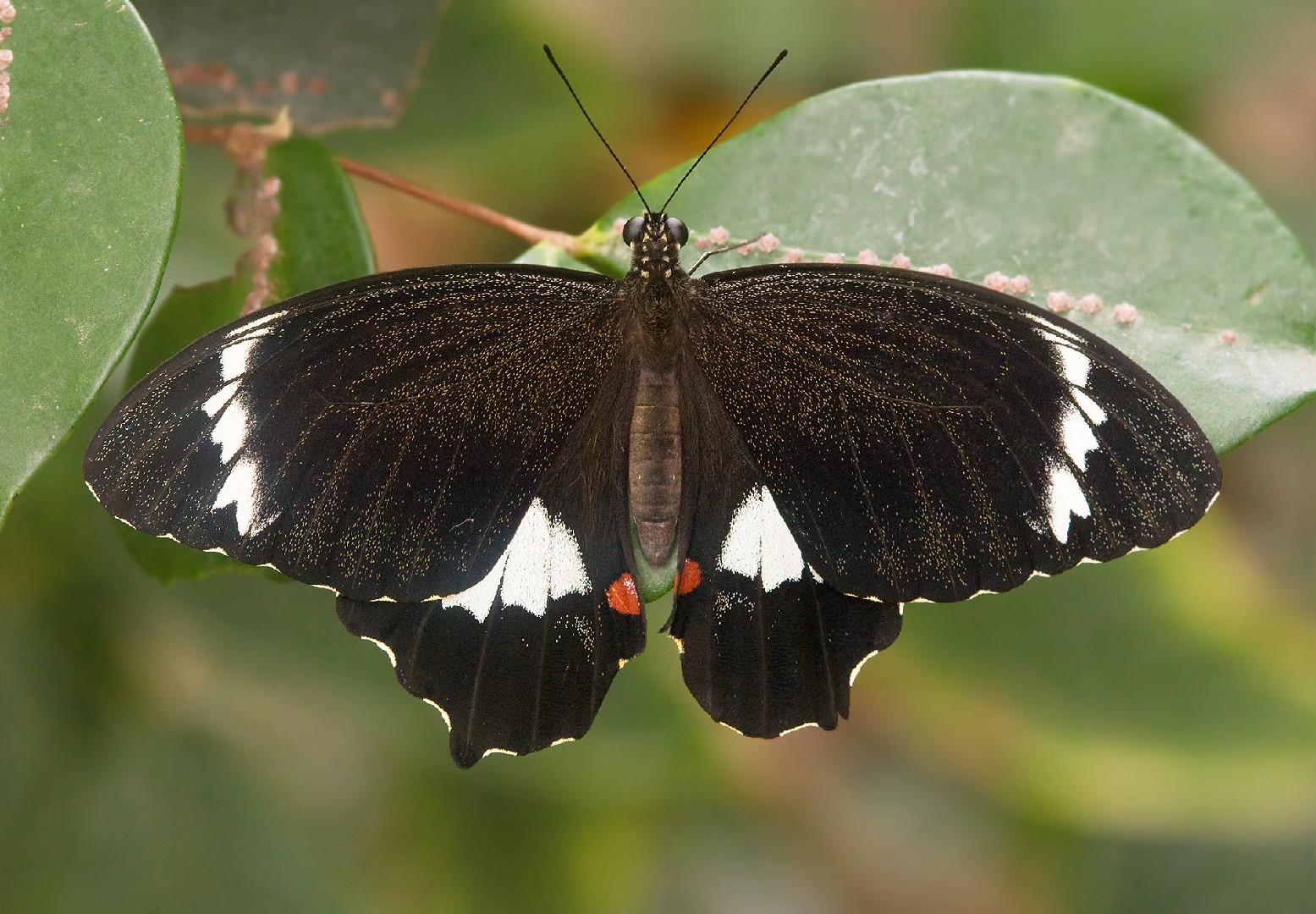
7. Orchard swallowtail
The orchard swallowtail (Papilio aegeus) is a swallowtail butterfly without the long tail. Despite the confusion, it is still a beautiful butterfly that is a combination of black, white, and orange. While they are typically in Australia, they are known to expand their territory to Victoria when citrus trees are abundant. This gives it the secondary name of the Large citrus butterfly.
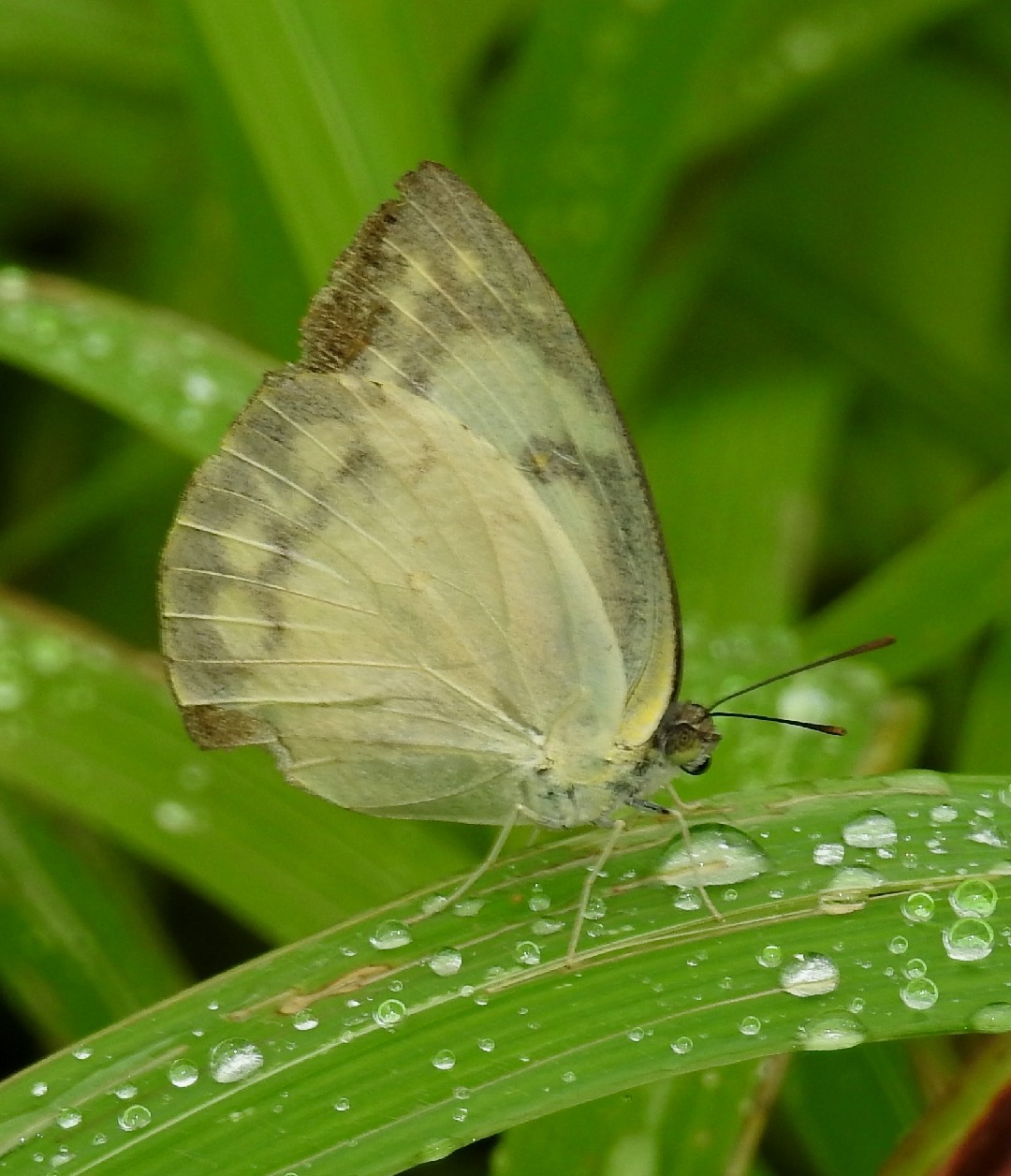
8. Common emigrant
Male. "The upperside of the male is chalky-white, sometimes with a more or less broad and clearly defined basal sulphur-yellow area on both fore and hind wings; this sulphur-yellow colour is at times diffused over the whole surface of the wings, though generally it becomes paler towards the terminal margins. For the fore wing, the whole, or sometimes only the apical half, of the costa narrowly black, this color widened out irregularly at the apex; termen widely black at the apex, the colour narrowed posteriorly. This border in some specimens almost reaches the tornus, in others terminates above vein 4; occasionally it is continued posteriorly by a series of block dots at the apices of the veins. The Hind wing generally are uniform, unmarked, and some specimens bear minute black dots at the apices of the veins. "On the underside the groundcolour is very variable, with white with a slight to strong ochraceous tinge, greenish white or sulphur-yellow. The fore wing is typically without markings, in some specimens with a patch of sulphur-yellow on either side of base of median nervure, in the very yellow examples the tornal area is often widely greenish white, in others (Catopsilia catilla, Cramer) it bears a spot variable in size on the discocellulars. This spot has a pearly centre and an outer reddish line. Many specimens have an irregular angulated narrow discal reddish line (the colour varies in intensity) that runs from the costa obliquely outwards to vein 7, and then obliquely inwards to vein 2, though this line is often absent in specimens that bear the discocellular spot; apex and termen sometimes very narrowly reddish. The hind wing is typically uniform, without markings." Female. "On the female upperside the ground-color varies as in the male, but sometimes it is chalky white at the bases of the wings, with the terminal margins more or less broadly sulphur-yellow. Fore wings always with a round, occasionally quadrate, black discocellular spot variable in size; in some specimens the costa is black only towards the apex of the wing, in others broadly black throughout and opposite the apex of cell so widened out as to touch the discocellular spot. In lightly marked specimens in addition to the discocellular spot, there is only an irregular terminal black band dentate inwardly and widest at the apex of the wing; in others there is in addition a more or less diffuse highly curved macular postdiscal band that extends from the costa obliquely outwards down to vein 7, where it often touches the terminal black band, and thence is continued downward and slightly inclined inwards to interspace 1, getting gradually paler and fainter posteriorly. Hind wing are a series of terminal inter-spacial black spots that vary in size, and in the dark forms coalesce into a terminal black band." 
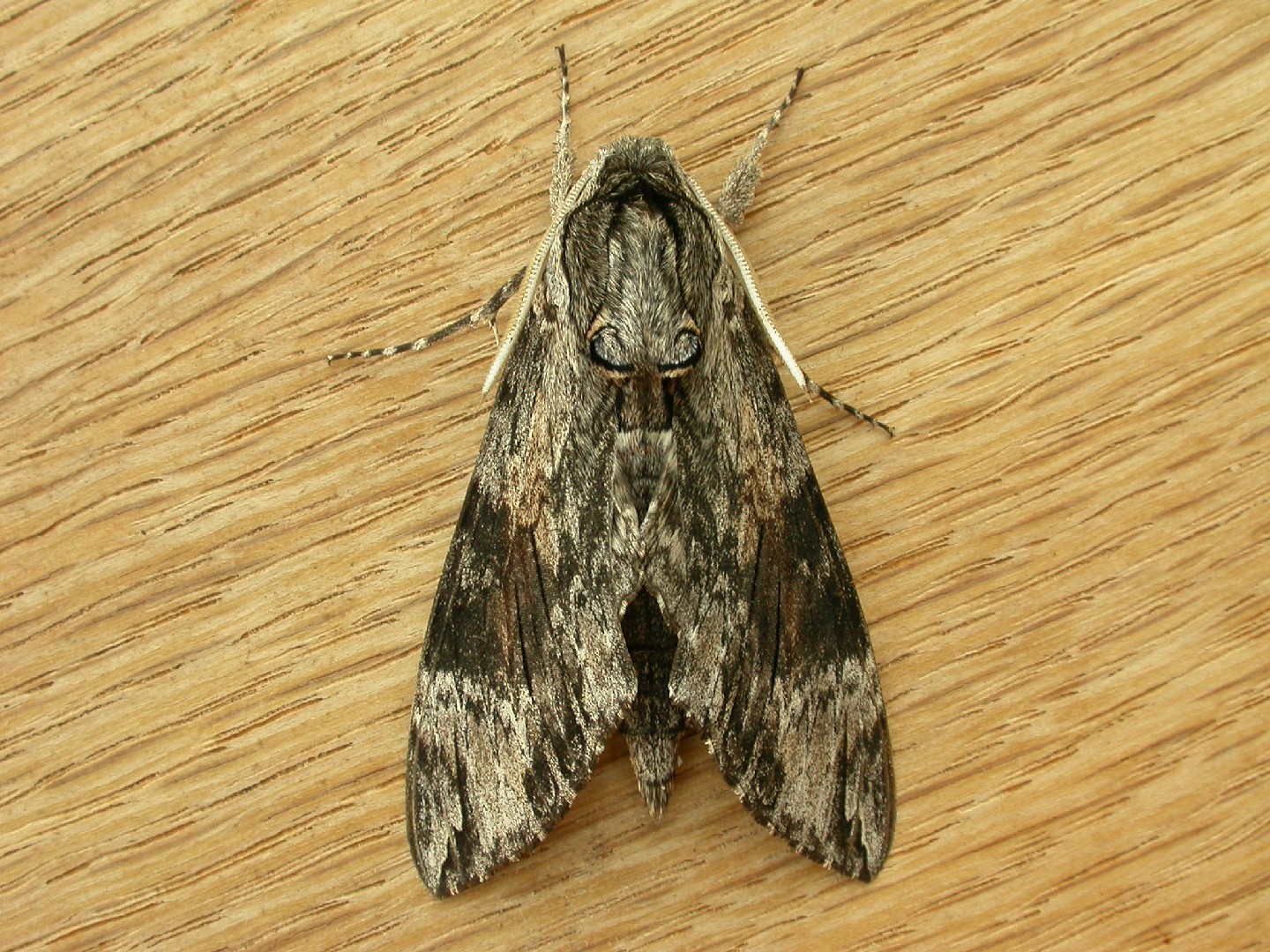
9. Convolvulus hawk moth
Convolvulus hawk moth (Agrius convolvuli) is a species of moth most commonly spotted between sunset and twilight. Its elongated head appendage is exceptionally long; longer than the rest of its body which allows it to drain nectar from trumpet-shaped flowers. It feeds while flying and is attracted to light.

10. Silver-striped hawk-moth
The forewing is typically 1.1–1.4 inches in long. The body and forewing of the adult moth are green and ochre. They have silvery white dots and streaks, with a silvery band running obliquely on the forewing. The hindwing is red near its lower angle (tornus) to pinkish over other parts of the wing. It is crossed by a black bar and black veins. 
More


